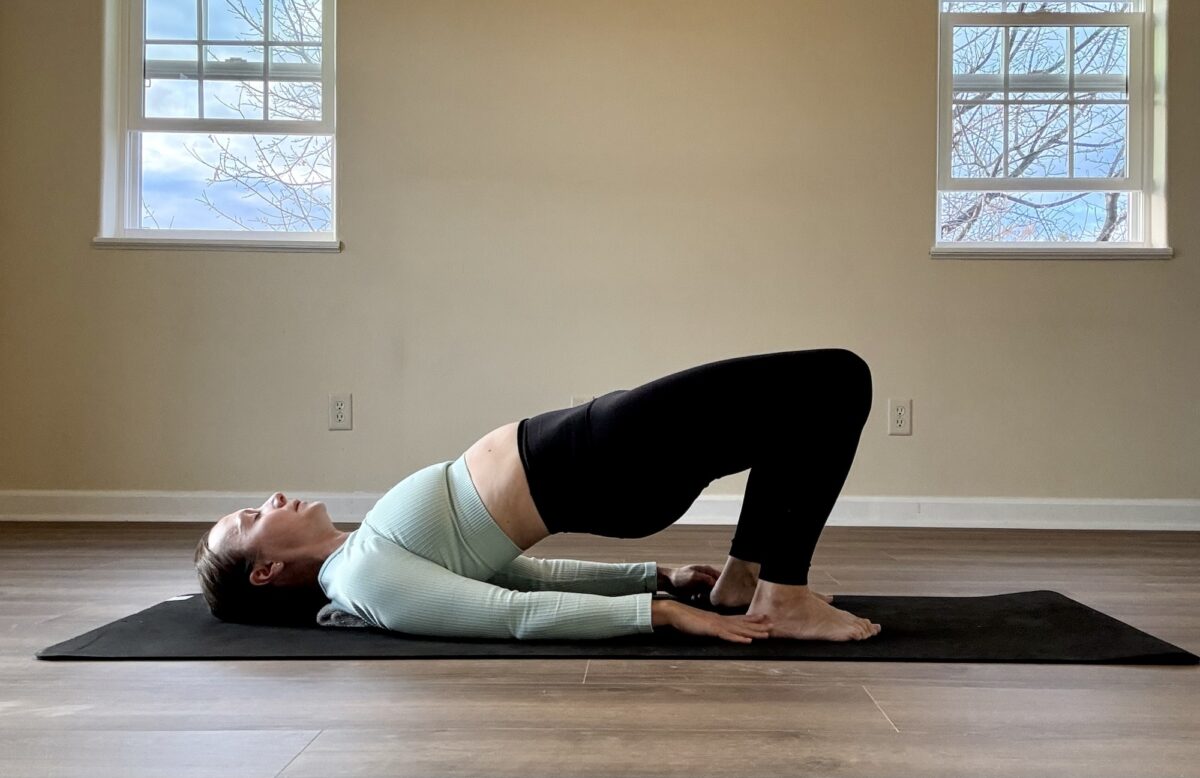

Start Position:
Lie on your back in a hooklying position (knees bent, feet flat on the floor). Place your arms relaxed at your sides, palms facing up. Keep your pelvis neutral with a slight curve in your lower back. Anchor your lower ribs to the ground, maintaining a rib-hip connection and neutral spine.
Rib Anchor:
Before beginning the exercise, anchor your lower ribs down so they gently touch the floor. Keep this anchor throughout the movement to maintain stability and alignment.
Action:
- Prepare: Inhale to prepare, engaging your deep core muscles and keeping your ribs anchored.
- Bridge Up: Exhale as you engage your pelvic floor and lift your buttocks off the floor, creating a straight line from your shoulders to your knees. Keep your arms relaxed at your sides and your lower ribs anchored throughout.
- Hold and Adjust: While maintaining your rib anchor (reset if needed), walk your feet back as far as you can. This position places the hamstrings at a disadvantage and enhances glute max recruitment. Focus on these key points:
- Maintain your rib anchor.
- Breathe naturally.
- Use your deep core to hold the position.
- You should feel your glutes activate as you walk your feet back.
- Hold: Hold the position as long as you can while maintaining your rib anchor, deep core, and glutes firing to support you. Keep breathing normally and ensure proper alignment throughout.
Purpose:
- Maximizes glute activation.
- Enhances core stability and rib-hip alignment.
- Improves alignment and spinal stability.
- Addresses Mobility and Stability in one exercise.
Note of Precaution:
- Avoid letting your ribs flare or your back arch during the movement.
- Move slowly and with control, resetting your rib anchor as needed.
- DO NOT hold your breath.
- Stop if you feel pain or discomfort, and consult a physical therapist if necessary.
Modifications:
Add ball between knees








